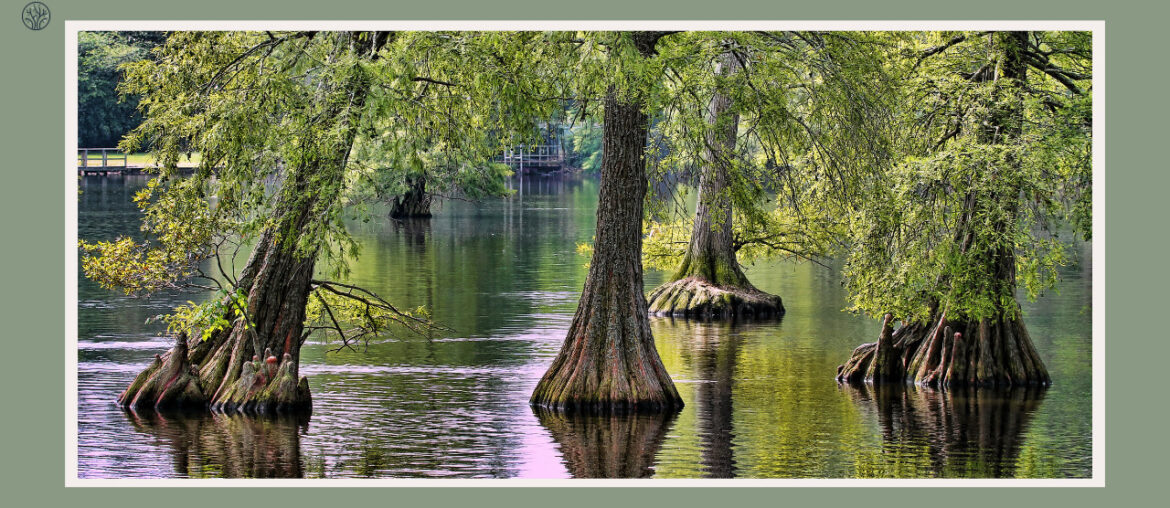Water is essential for life, but too much of it can harm plants. This is why many trees prefer soil that drains well and does not retain too much moisture. However, there are exceptions. Some trees that can grow in water include Mangrove Trees, Willow Trees, Bald Cypress Trees, Water Tupelo & Swamp Tupelo, Red Maple Trees, Pumpkin Ash Trees, Black Spruce, Swamp Cottonwood, River Birch, Sweetbay Magnolia, and Sweet Gum.
In this blog, we will explore the fascinating features and functions of these water-loving trees and how they adapt to living in water.
Key takeaways
- Trees that can grow in water often have unique adaptations for aquatic living, like the mangrove’s salt-filtering roots, the bald cypress’s water-tolerant ‘knees’, and the willow’s extensive water-absorbing root system.
- These adaptations allow them to thrive in challenging wet environments, reducing competition and enabling survival in waterlogged or flooded conditions.
- These water-loving trees play crucial roles in their ecosystems. They stabilize soil, reduce erosion, provide habitats for wildlife, and contribute to the ecological balance of their environments.
- While some of these trees prefer wet conditions, others, such as the red maple, are versatile and can thrive in both wet and dry soils.
1. Mangrove Tree
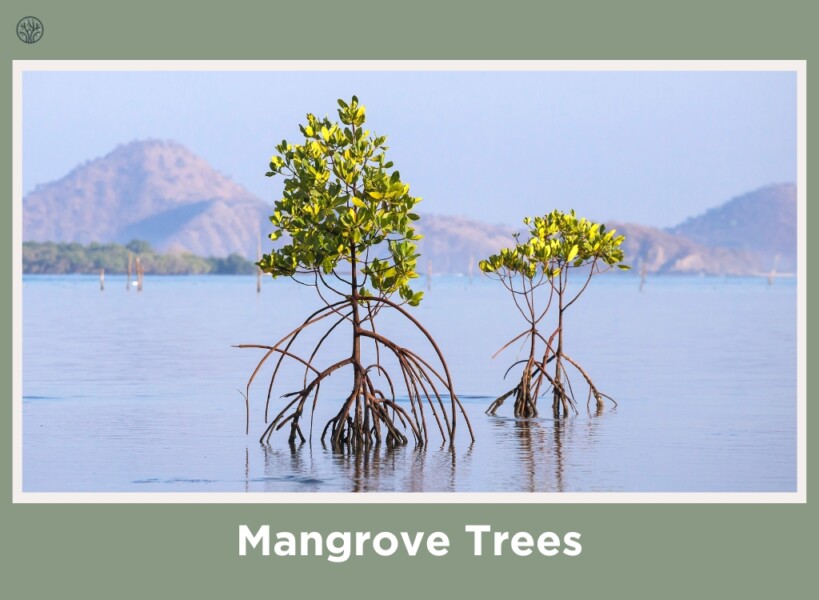
Mangrove Trees are nature’s clever builders, living in the coastal and estuarine regions of the tropics and subtropics. These trees are instantly recognizable by their dense tangle of prop roots, which grow from their trunks and branches into the salty waters below. This complex root system has multiple purposes: it anchors the tree, filters salt from the seawater, and makes a unique habitat for many species.
Mangrove trees have evolved remarkable adaptations to be able to grow in water. Some species get rid of excess salt through their leaves, while others store it in old leaves before shedding them. This salt management helps them grow in conditions that would normally be too harsh for other plants.
Mangroves are not only important for keeping coastlines stable and preventing erosion but also for supporting healthy marine ecosystems. They act as nurseries for many fish species and offer food and shelter for a rich variety of wildlife.
2. Willow Tree
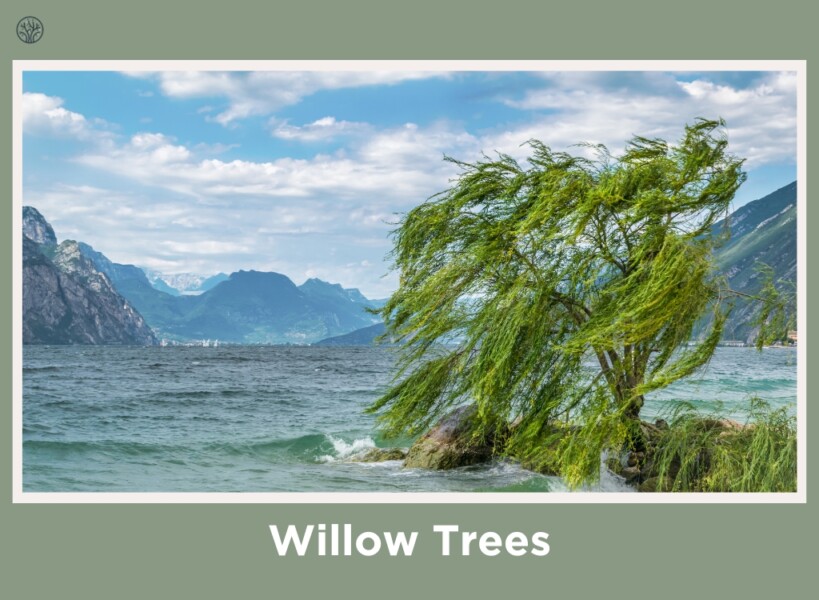
Willow Trees are a common sight along riversides, lakes, and wetlands. These trees have long, thin leaves and flexible branches that move gracefully in the wind. Willows grow very fast and can reach impressive heights, making them a prominent feature in many landscapes.
Adapted to life near water, willow trees have extensive root systems that are highly effective in absorbing water and nutrients from wet soils. This makes them valuable in areas prone to soil erosion, as their roots help to hold and stabilize the soil along riverbanks and wetlands. Interestingly, while willows are famous for their love of wet conditions, some species can also do well in drier environments.
3. Bald Cypress
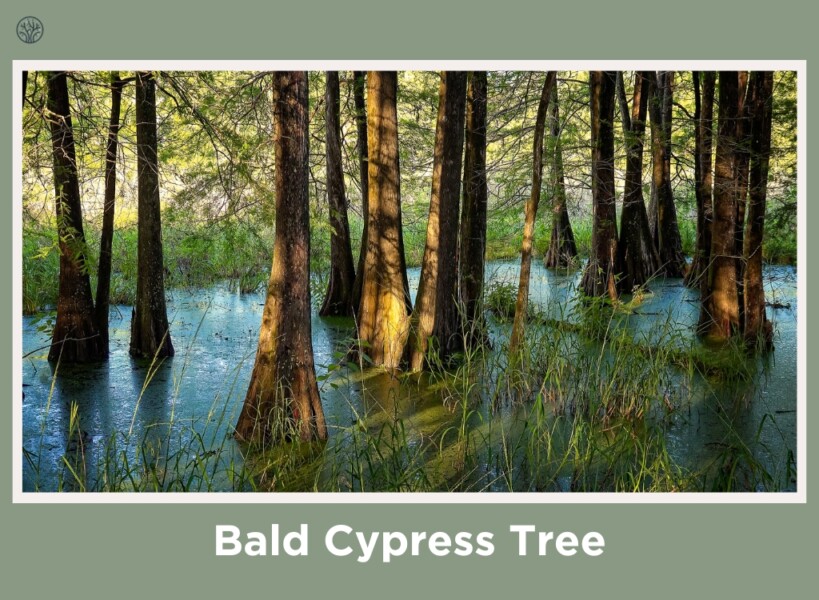
The Bald Cypress Tree is a huge swamp dweller, especially in the southeastern United States. These trees are tall and majestic, with wide, flared trunks and soft, green leaves that turn a bright copper color in the fall. One of the Bald Cypress’s most intriguing features is the mysterious ‘knees’ – cone-shaped wooden bumps that stick out of the water around them.
Bald Cypress Trees can grow well in water environments thanks to their roots. They are specially adapted to deal with waterlogged conditions, letting them breathe even when underwater. This adaptation is important in their swampy habitats, where water levels can fluctuate significantly.
The wood of the Bald Cypress is highly resistant to rot and decay, which is why in the past, it was used as a building material in wet environments. Beyond their practical uses, these trees play a vital role in the ecosystem, giving shelter to many kinds of wildlife and helping to keep the wetlands healthy.
4 – 5. Water Tupelo & Swamp Tupelo
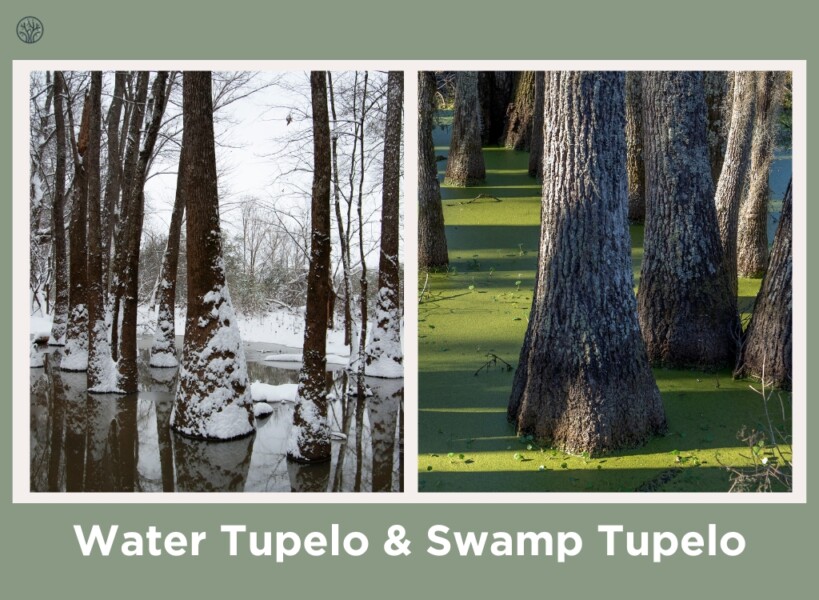
Water Tupelo and Swamp Tupelo are closely related trees that have adapted to different wetland environments in the southeastern United States. The water tupelo trees, or Nyssa aquatica, stand out with their tall, straight trunks and swollen bases, which help them grow well in deeper waters. In contrast, the Swamp Tupelo, or Nyssa biflora, prefers shallower waters and has a more tapered base.
Both of these Tupelo species have amazing adaptations to life in aquatic environments. Their root can survive long periods of flooding, making them resilient in their swampy habitats. The Water Tupelo can even handle being submerged for a long time.
These trees also provide crucial habitat and food for wildlife, with their fruits serving as a food source for birds and other animals. The way these trees spread their seeds through water also helps the growth and health of wetland areas.
6. Red Maple
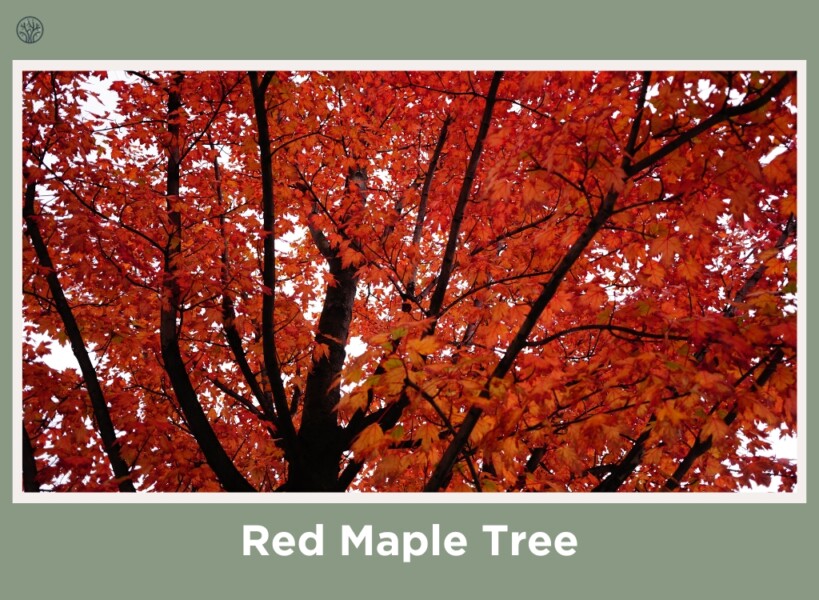
The Red Maple Tree, a common sight in eastern North America, is both beautiful and adaptable. Best known for its unique seeds and vibrant red foliage in autumn, this tree has a knack for thriving in various environments, from dry uplands to wet lowlands.
What makes the Red Maple remarkable is its adaptability to different soil types. In wetlands, it benefits from the nutrient-rich environment, allowing it to flourish alongside more water-dependent species. This adaptability extends to its ecological role, too. The tree’s seeds serve as a vital food source for local wildlife, making it an integral part of the ecosystem.
7. Pumpkin Ash
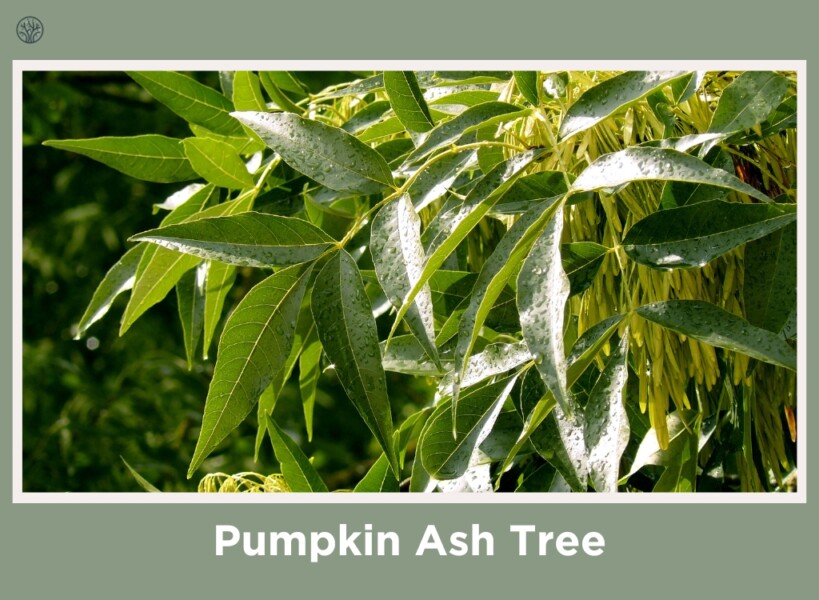
The Pumpkin Ash Tree, with its unique, swollen base, looks like something from a fairy tale. This tree lives mainly in the swamps and floodplains of the eastern United States, where it is an important part of its wetland habitat. Currently, the Pumpkin Ash faces many challenges due to the invasive emerald ash borer.
This tree’s preference for wet, swampy areas is key to its survival strategy. The Pumpkin Ash’s method of seed dispersal is particularly adapted to its aquatic environment, with seeds traveling via water to new growth locations. Additionally, the tree provides food for local wildlife, contributing to the biodiversity of its habitat.
8. Black Spruce
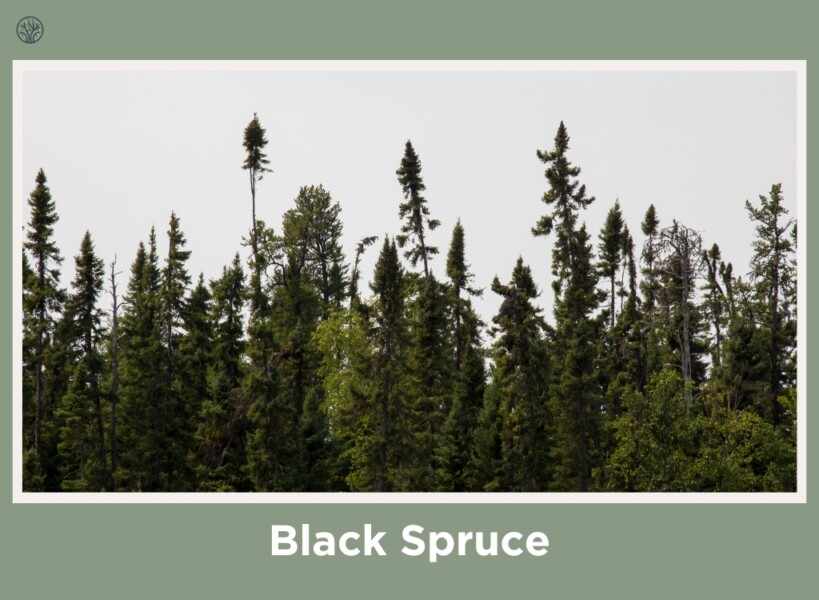
The Black Spruce, a sign of northern strength, thrives in the cold, wet landscapes of North America. This tree grows mostly in bogs and wetlands. It has short, needle-like leaves and a cone shape, which help it deal with its chilly, wet environment.
In these challenging conditions, the Black Spruce has developed several adaptations. Its root can handle the sour, low-oxygen soil of bogs and swamps. This tree’s preference for wet, nutrient-limited environments is part of its unique ecological niche, allowing it to grow where other species might struggle. The Black Spruce is more than just a fixture of the landscape; it provides crucial habitat for wildlife and plays a significant role in the ecology of northern wetlands.
9. Swamp Cottonwood
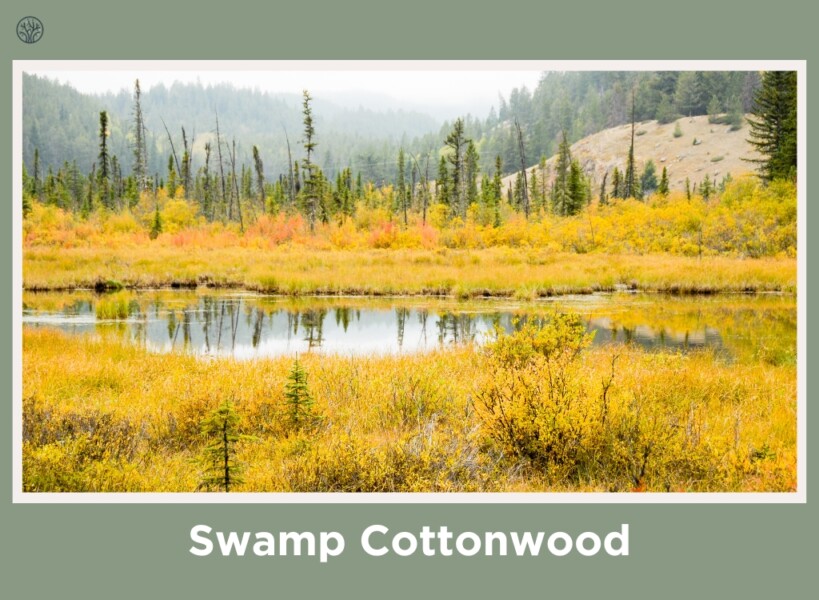
Swamp Cottonwood, a lesser-known but amazing tree, lives in the floodplains and wetlands of the eastern United States. Its preference for standing water and flood-prone areas makes it a key species in these ecosystems. The tree has wide, heart-shaped leaves and a strong shape, often growing very tall.
Adapting to life in water, the Swamp Cottonwood has roots that can do well in wet soils. This adaptation is crucial for the tree’s survival in areas that are frequently submerged. The Swamp Cottonwood’s role in these wetlands is important for keeping the soil stable and making a home for wildlife. Its ability to cope and grow in flooded conditions shows the tree’s importance in keeping the health and diversity of its native habitats.
10. River Birch
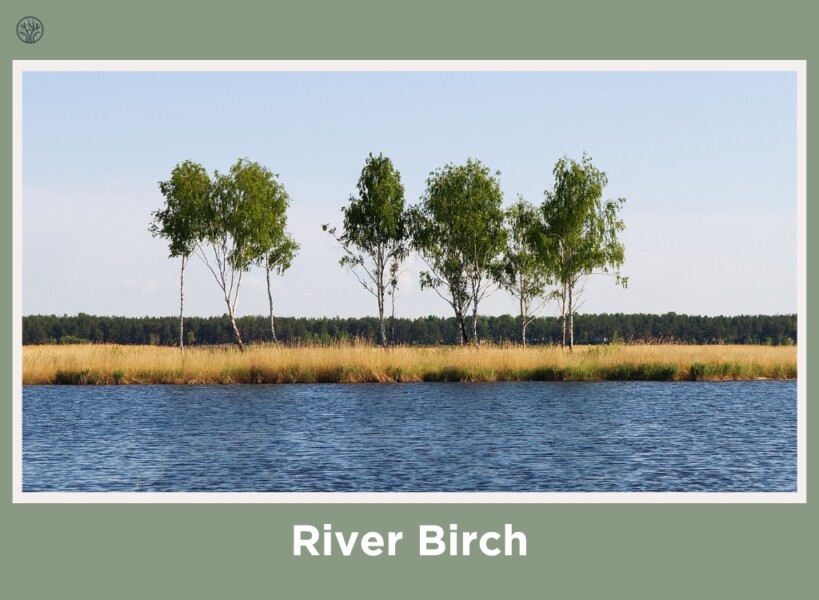
The River Birch, a tree with peeling bark and a love for water, is a common sight along riverbanks and in wetlands. This tree, native to the eastern United States, is well-adapted to life in moist, flood-prone environments. The River Birch is not just a resilient species; its aesthetic appeal, particularly the unique texture and color of its bark, makes it a favorite in both natural and landscaped settings.
One key adaptation of the River Birch is its ability to tolerate and even thrive in waterlogged soils. This characteristic enables the tree to stabilize riverbanks and control erosion, playing an essential role in the health of riparian ecosystems. Additionally, the River Birch is a valuable resource for local wildlife, providing habitat and food through its seeds and leaves.
11. Sweetbay Magnolia
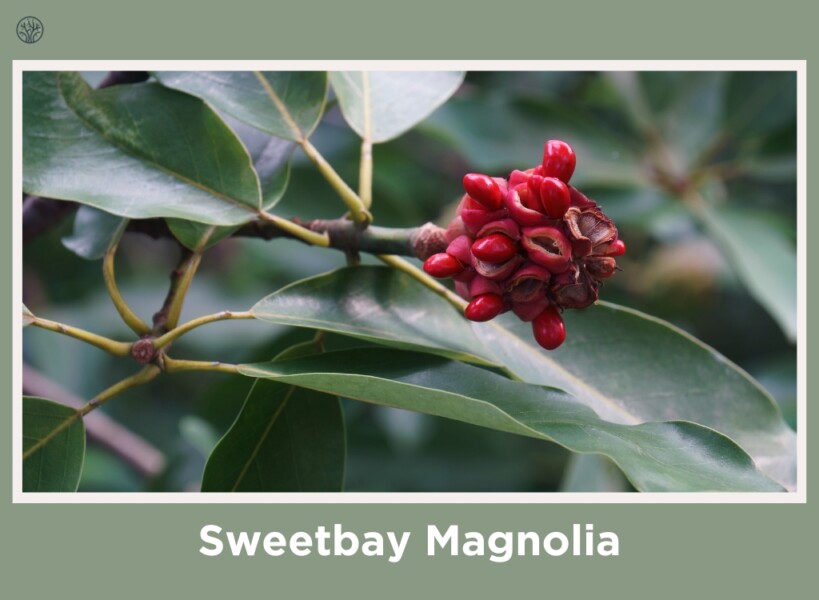
The Sweetbay Magnolia is a graceful and fragrant addition to the wetlands and coastal plains of the southeastern United States. Renowned for its creamy white flowers and glossy, evergreen leaves, this tree brings a touch of elegance to the landscapes it inhabits. The Sweetbay Magnolia’s beauty is matched by its adaptability, as it thrives in both wet and slightly drier conditions.
In wet environments, the Sweetbay Magnolia demonstrates its ability to adapt to soggy, acidic soils, typical of swamps and wetlands. This adaptability makes it a versatile component of these ecosystems, supporting biodiversity and contributing to the overall health of the area. The tree’s flowers attract pollinators, while its fruits provide nourishment for local bird species, underscoring its ecological value.
12. Sweet Gum
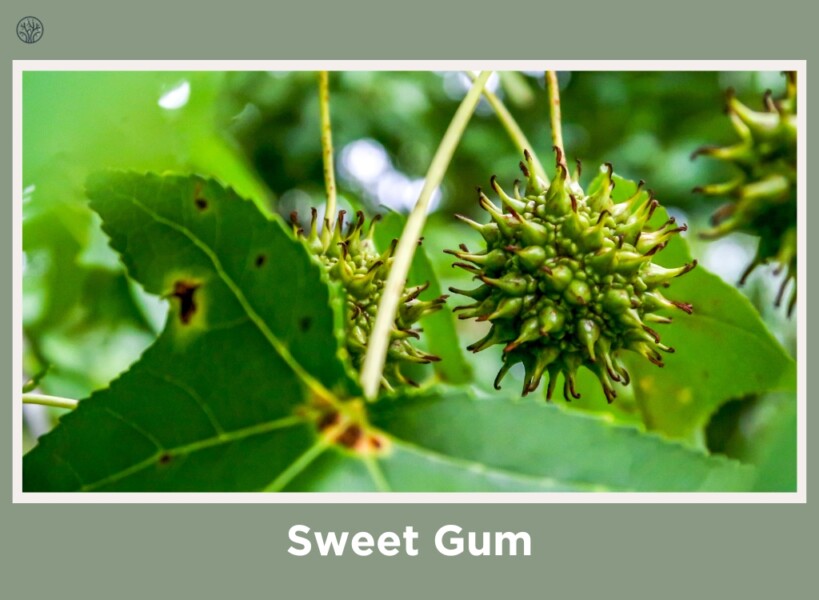
The Sweet Gum tree is a beautiful and useful tree, known for its star-shaped leaves and spiky fruit. Predominantly found in the southeastern United States, the Sweet Gum flourishes in moist, rich soils typical of river valleys and along stream banks. While it commonly grows in these wet environments, the Sweet Gum is also quite adaptable and can thrive in drier conditions.
This adaptability is particularly evident in how the Sweet Gum copes with various soil types. In wetter areas, the tree benefits from the nutrient-rich environment, allowing for faster growth and development. Its seeds, inside spiky green balls, are not only a cool part of its look but also help the ecosystem, giving food to wildlife.
Moreover, the Sweet Gum is valued for its timber and ornamental qualities. The tree’s amazing fall colors, changing to red, purple, and gold, make it look great in every landscape.
FAQs
What kind of trees and plants grow around water?
There are many trees that can grow around water. These include Mangrove Trees, Willow Trees, Bald Cypress Trees, Water Tupelo & Swamp Tupelo, Red Maple Trees, Pumpkin Ash Trees, Black Spruce, Swamp Cottonwood, River Birch, Sweetbay Magnolia, and Sweet Gum. Each of these species has unique adaptations that enable them to survive and thrive in wet environments.
Which trees hold the most water?
Generally, larger trees are able to hold more water. The best water-absorbing trees include Red Maple, Ash, Black Gum, White Cedar, and River Birch.
Can any plant root in water?
No, not every plant can root in water. Some plants need soil to provide nutrients, oxygen, and stability for their roots. Plants that can root in water are usually those that have evolved to grow in wet or swampy environments, or those that can easily form roots from stem cuttings. Some examples of plants that can root in water are pothos, African violet, mint, basil, and coleus. Unlike the trees in this list, although these plants can grow in water for a long time, they will eventually need to be transferred to a soil medium to thrive.
Will plant roots rot in water?
Only a few plants have evolved and adapted to live in aquatic environments. For other trees, they cannot survive in water because their roots will rot due to lack of oxygen and may get infected by harmful fungi or bacteria.

